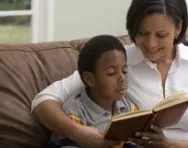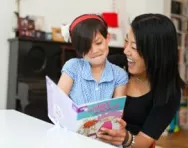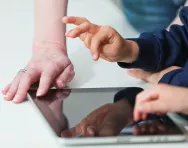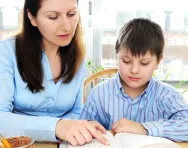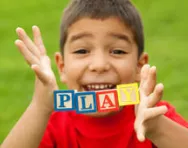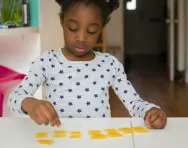Important update from TheSchoolRun
For the past 13 years, TheSchoolRun has been run by a small team of mums working from home, dedicated to providing quality educational resources to primary school parents. Unfortunately, rising supplier costs and falling revenue have made it impossible for us to continue operating, and we’ve had to make the difficult decision to close. The good news: We’ve arranged for another educational provider to take over many of our resources. These will be hosted on a new portal, where the content will be updated and expanded to support your child’s learning.
What this means for subscribers:
- Your subscription is still active, and for now, you can keep using the website as normal — just log in with your usual details to access all our articles and resources*.
- In a few months, all resources will move to the new portal. You’ll continue to have access there until your subscription ends. We’ll send you full details nearer the time.
- As a thank you for your support, we’ll also be sending you 16 primary school eBooks (worth £108.84) to download and keep.
A few changes to be aware of:
- The Learning Journey weekly email has ended, but your child’s plan will still be updated on your dashboard each Monday. Just log in to see the recommended worksheets.
- The 11+ weekly emails have now ended. We sent you all the remaining emails in the series at the end of March — please check your inbox (and spam folder) if you haven’t seen them. You can also follow the full programme here: 11+ Learning Journey.
If you have any questions, please contact us at [email protected]. Thank you for being part of our journey it’s been a privilege to support your family’s learning.
*If you need to reset your password, it will still work as usual. Please check your spam folder if the reset email doesn’t appear in your inbox.
Is your child a visual learner?
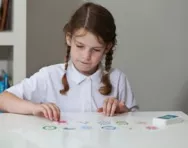
What are learning styles?
Please note that the learning styles theory has been questioned by neuroscientists and educational experts and many teachers have moved towards the use of other, more evidence-based, methods in the classroom. This article is intended to give an overview of the theory as it may still be mentioned during your child's time at primary school.
There are many different models of learning styles, but the most commonly known is the VAK model, developed by New Zealand teacher Neil Fleming in 2001.
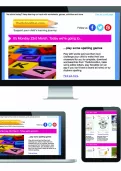
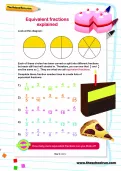
Start a unique learning programme!
- Weekly programme for each school year
- Worksheets sent direct to your inbox
- Keeps your child's learning on track
According to his theory, children can be categorised as visual learners (those who learn through seeing), auditory learners (who learn by listening) and kinaesthetic learners (who learn by moving and doing). Today, most teachers agree that these definitions are rather simplistic, and that children tend to learn in a variety of different ways, but nevertheless, it can be useful to try to identify how your child learns best.
What is a visual learner?
Visual learners are children who find it easiest to learn by seeing. For a concept to sink in, they need to be able to see it – or at least visualise it in their mind. Some visual learners learn best through written language and are good at writing and following directions, while others find it easier to learn through charts, diagrams, pictures and videos.
Is your child a visual learner?
Unsurprisingly, visual learners tend to enjoy drawing and colouring, and also like doing jigsaws and puzzles and playing with construction toys like Lego and Meccano.
Your child may be a visual learner if they're good at drawing (and reading) maps, charts and diagrams, and interested in machines and inventions.
Visual learners usually have good imaginations, and may appear to be daydreamers in class, because their attention is tied up with mentally illustrating the concepts that are being taught. They tend to look upwards when they’re thinking hard about something, and, when they understand something, are likely to say things like, ‘I see!’ or, ‘I get the picture.’
Helping your visual learner with spelling and other key skills
Visual learners are often very good at spelling, because they naturally take a mental photograph of the words they have to learn.
Because visual learners need to be able to see a concept to visualise it, it’s also a good idea to encourage your child to use colours or diagrams to help them learn spellings or times tables. For instance, if they struggle to remember in which order to write the ‘ie’ in words like ‘friend’ or ‘believe,’ writing that letter pairing in a different colour ink could provide the visual cue that he needs for it to sink in.
Top five learning strategies for visual learners
- Encourage your child to leave lots of margin space around their work, so they can write notes or draw pictures to prompt their memory.
- Use different coloured pens, highlighters or underlining to help important concepts sink in.
- Make use of tables, graphs and diagrams – your child is, for example, likely to grasp the idea of the water cycle in diagrammatic form far more easily than if it’s explained verbally.
- Talk to your child about the importance of looking at their teacher when they are speaking; this will help to keep their mind focused, rather than drifting off into daydreams.
- Encourage your child, before beginning a new book or a new chapter, to scan it through first, taking in headings, pictures and other page furniture – this will give them a good overview of the content before they start reading.
Helping your visual learner with homework
Visual learners tend to work best on their own, so make sure your child has somewhere to work without distraction.
Encourage them to use diagrams or doodles to help solve a problem – if, for example, they're working on an addition task, they might want to draw dots on the page margin to add up.
Provide a good selection of stationery for them to use, such as coloured pens, sticky notes and highlighters. If they're researching a project, allow them to use picture books and videos on the internet to find the information they need. And don’t worry too much about presentation – their homework may end up looking like a riot of colour and doodles, but these tactics could be improving their learning.
